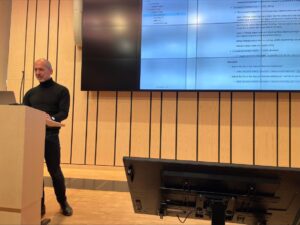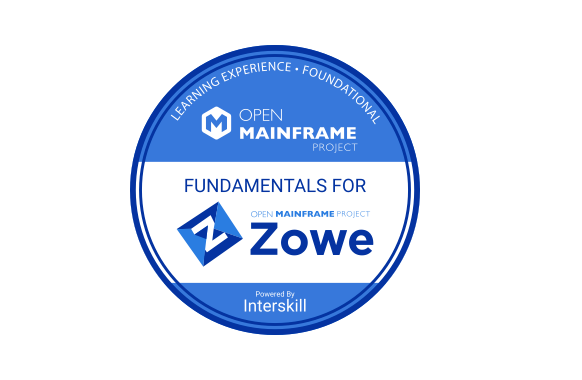
Written by Thibaut CORDIER, a Mainframe Dev Expert
At Groupama, as with many companies modernizing their IT infrastructure, building a DevOps toolchain is a good place to begin.
After looking for the latest mainframe solutions on the internet, I found (among the diffe
rent vendors’ products) Zowe, a fresh open source initiative by the Open Mainframe Project and supported by IBM and other companies.
After a quick chat to my manager, he asked me to check whether Zowe was a solution already used by companies similar to Groupama, and if so for what use cases. After some google searching and browsing LinkedIn posts I met someone who has already used Zowe to create an enterprise CI/CD pipeline in a bank.
Not only that, I discovered that Zowe had been awarded “Best DevOps for Mainframe solution” 2 years in a row (2021 and 2022) by the website DevOps Dozen. Things were looking up.
Even better, I found a free training course for Zowe (https://www.zowe.org/learn) and using the IBM Z Xplore platform allowed me to learn how to install Zowe Explorer on VsCode, Zowe CLI and get started quickly.
This medium blog also provide good information like this subject on password management written by Joe Winchester last year, and I used it to set nested profiles.

Joe Winchester presenting Zowe at a recent conference.
The next step was to ask my system engineer to install the z/OSMF REST API on a dev partition, allowing me to start experimenting some Zowe CLI commands directly from CMD prompt on my Windows laptop. From then, I was able to write python scripts with VsCode and its terminal to begin building out functionality.
After that, I tried to implement some Zowe command directly in a Gitlab CI yaml file. Because of the portability of Zowe CLI, being a nodeJS package, this was a huge help.
The yaml file instantiates a docker image and only with 1 line of “npm install” it’s done ! After that you can remotely control the execution of jobs on the Mainframe, get the result of their execution and manage the exit of each step of your pipeline… Thanks a lot !
Building a DevOps toolchain is an iterative process, even if you have to think of the architecture of it, you can add improvements year after year without trying to boil the ocean all at once. As I found out, you can start your CI/CD Mainframe toolchain but keep manual testing approach at the beginning using a crawl, walk, run approach. Furthermore, with mainframe automation testing tools being quite new in the market this helps to stage rollout, and I’m keeping an eye out for The Open Mainframe projects “Cobol check” and “Galasa “, both in the incubation status. Hopefully they will be active soon to enable me to think about adopting them for enterprise rollout scenarios.
To finish this journey and if you want to learn more about Zowe, don’t miss the short Zowe overview video and the free Interskill course Zowe Foundations to have a complete overview of Zowe.
 In addition to Mainframe trends, the Arcati Yearbook 2024 report is available which has great data around not just Zowe addoption (85% of mainframe customers) but lots of additional information around mainframe trends. Check it out and enjoy !
In addition to Mainframe trends, the Arcati Yearbook 2024 report is available which has great data around not just Zowe addoption (85% of mainframe customers) but lots of additional information around mainframe trends. Check it out and enjoy !
***********************************************************************************************************
Une première découverte de l’Open Mainframe Project et de Zowe
A Groupama, comme beaucoup d’entreprises cherchant à moderniser leurs infrastructures IT, la construction d’une chaîne d’outils DevOps est un bon début.
Après avoir recherché les dernières solutions pour le Mainframe sur Internet, j’ai trouvé, parmi les différents produits des fournisseurs, un tout nouvel espace open source offert par l’open mainframe project et supporté par IBM et d’autres sociétés.
Après un rapide échange avec mon manager, il me demanda de verifier si Zowe était une solution déjà utilisé par des entreprises similaires en taille à Groupama, et si oui, pour quels cas d’usages. Après quelques recherches sur Google et quelques échanges sur LinkedIn, j’ai rencontré une personne qui avait déjà utilisé Zowe pour créer un pipeline CI/CD d’entreprise dans une banque.
Et suite à cela, j’ai découvert que Zowe avait été récompensé “Meilleur solution DevOps pour le Mainframe” 2 années de suite (2021 et 2022) par le site web DevOps Dozen. Tout les feux étaient au vert.
Encore mieux, j’ai trouvé une formation gratuite en ligne pour Zowe (https://www.zowe.org/learn) et en utilisant la plateforme IBM Z Xplore, cela m’a permis d’apprendre comment installer Zowe Explorer sur VsCode, Zowe CLI et de démarrer rapidement.
Ce blog medium fournit aussi de bonnes informations comme ce sujet sur le password management écrit par Joe Winchester l’année dernière, et je l’ai utilisé pour configurer des profils imbriqués.
L’étape suivante fût de demander à mon ingénieur système d’installer l’API REST de z/OSMF sur une partition de dev, me permettant de commencer à tester quelques commandes Zowe CLI directement sur l’invite de commande sur mon PC portable Windows. Ensuite, j’ai pu commencer à écrire des scripts python avec VsCode et son terminal pour tester des fonctionnalités.
Suite à cela, J’ai essayé d’implémenter quelques commandes Zowe directement dans un fichier yaml Gitlab CI. Du fait de la portabilité de Zowe CLI, étant un package nodeJS, cela a été facile.
Le fichier yaml instancie une image docker et seulement avec 1 ligne de “npm install” c’est fait ! Après cela, vous pouvez contrôler à distance l’exécution de jobs sur le Mainframe, obtenir le résultat de son exécution et gérer les exit de chaque étape de votre pipeline… Un grand merci !
Construire une chaîne d’outils DevOps est un processus itératif, quand bien même il est nécessaire de penser son architecture au départ, vous pouvez ajouter des améliorations années après années sans chercher à tout révolutionner en une fois. De ce que j’ai découvert, vous pouvez commencer votre chaîne d’outils CI/CD Mainframe mais en conservant une approche par des tests manuels au départ en partant d’une approche ramper, marcher, courir. En outre, les outils de tests automatisés sur mainframe étant assez nouveau sur le marché, cette démarche aide pour organiser le déploiement, et je garde un œil sur les projets Open Mainframe “Cobol check” et “Galasa “, en phase d’incubation. Nous pouvons espérer qu’ils passeront au statut “Actif” prochainement pour envisager des scenarios d’adoption en entreprise.
Pour terminer ce récit et si vous voulez en savoir plus à propos de Zowe, ne ratez par cette petite vidéo Zowe overview video et la formation gratuite d’Interskill Zowe Foundations pour avoir une vue d’ensemble complète de Zowe.
En complément concernant les tendances sur Mainframe, le rapport Arcati Yearbook 2024 est disponible. Il contient un grand nombre d’informations pas uniquement à propos de l’adoption de Zowe (85% des clients mainframe) mais beaucoup d’autres éléments à propos des tendances sur Mainframe. Allez y jeter un oeil !